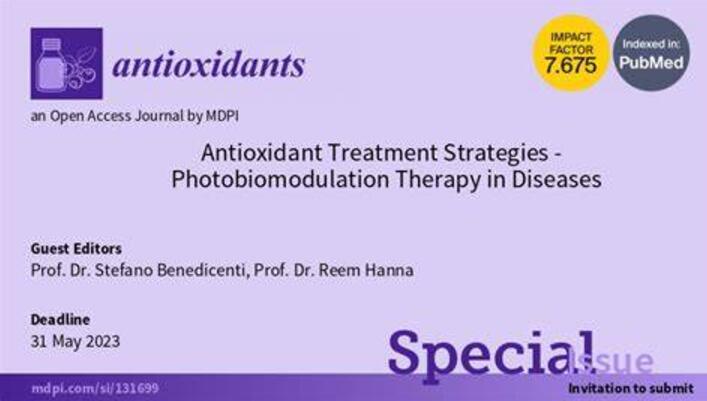Oxidative Stress and Age-Related Tumors
IF 6
2区 医学
Q1 BIOCHEMISTRY & MOLECULAR BIOLOGY
引用次数: 0
Abstract
Oxidative stress is the result of the imbalance between reactive oxygen and nitrogen species (RONS), which are produced by several endogenous and exogenous processes, and antioxidant defenses consisting of exogenous and endogenous molecules that protect biological systems from free radical toxicity. Oxidative stress is a major factor in the aging process, contributing to the accumulation of cellular damage over time. Oxidative damage to cellular biomolecules, leads to DNA alterations, lipid peroxidation, protein oxidation, and mitochondrial dysfunction resulting in cellular senescence, immune system and tissue dysfunctions, and increased susceptibility to age-related pathologies, such as inflammatory disorders, cardiovascular and neurodegenerative diseases, diabetes, and cancer. Oxidative stress-driven DNA damage and mutations, or methylation and histone modification, which alter gene expression, are key determinants of tumor initiation, angiogenesis, metastasis, and therapy resistance. Accumulation of genetic and epigenetic damage, to which oxidative stress contributes, eventually leads to unrestrained cell proliferation, the inhibition of cell differentiation, and the evasion of cell death, providing favorable conditions for tumorigenesis. Colorectal, breast, lung, prostate, and skin cancers are the most frequent aging-associated malignancies, and oxidative stress is implicated in their pathogenesis and biological behavior. Our aim is to shed light on the molecular and cellular mechanisms that link oxidative stress, aging, and cancers, highlighting the impact of both RONS and antioxidants, provided by diet and exercise, on cellular senescence, immunity, and development of an antitumor response. The dual role of ROS as physiological regulators of cell signaling responsible for cell damage and diseases, as well as its use for anti-tumor therapeutic purposes, will also be discussed. Managing oxidative stress is crucial for promoting healthy aging and reducing the risk of age-related tumors.氧化应激与老年肿瘤
氧化应激是活性氧和氮物种(RONS)与抗氧化防御系统之间不平衡的结果,前者由多个内源性和外源性过程产生,后者由保护生物系统免受自由基毒性的外源性和内源性分子组成。氧化应激是衰老过程中的一个主要因素,随着时间的推移会造成细胞损伤的累积。细胞生物大分子的氧化损伤会导致 DNA 改变、脂质过氧化、蛋白质氧化和线粒体功能障碍,从而导致细胞衰老、免疫系统和组织功能障碍,并增加对与年龄有关的病症(如炎症性疾病、心血管和神经退行性疾病、糖尿病和癌症)的易感性。氧化应激导致的 DNA 损伤和突变,或改变基因表达的甲基化和组蛋白修饰,是肿瘤发生、血管生成、转移和耐药性的关键决定因素。氧化应激导致的遗传和表观遗传损伤的累积最终会导致细胞无限制地增殖、抑制细胞分化和逃避细胞死亡,从而为肿瘤发生提供有利条件。结直肠癌、乳腺癌、肺癌、前列腺癌和皮肤癌是最常见的与衰老相关的恶性肿瘤,氧化应激与它们的发病机制和生物学行为有关。我们的目的是揭示氧化应激、衰老和癌症之间的分子和细胞机制,强调 RONS 和抗氧化剂(由饮食和运动提供)对细胞衰老、免疫和抗肿瘤反应发展的影响。此外,还将讨论 ROS 作为细胞信号传导的生理调节剂对细胞损伤和疾病的双重作用,以及其在抗肿瘤治疗中的应用。控制氧化应激对促进健康老龄化和降低老年肿瘤风险至关重要。
本文章由计算机程序翻译,如有差异,请以英文原文为准。
求助全文
约1分钟内获得全文
求助全文
来源期刊

Antioxidants
Biochemistry, Genetics and Molecular Biology-Physiology
CiteScore
10.60
自引率
11.40%
发文量
2123
审稿时长
16.3 days
期刊介绍:
Antioxidants (ISSN 2076-3921), provides an advanced forum for studies related to the science and technology of antioxidants. It publishes research papers, reviews and communications. Our aim is to encourage scientists to publish their experimental and theoretical results in as much detail as possible. There is no restriction on the length of the papers. The full experimental details must be provided so that the results can be reproduced. Electronic files and software regarding the full details of the calculation or experimental procedure, if unable to be published in a normal way, can be deposited as supplementary electronic material.
 求助内容:
求助内容: 应助结果提醒方式:
应助结果提醒方式:


